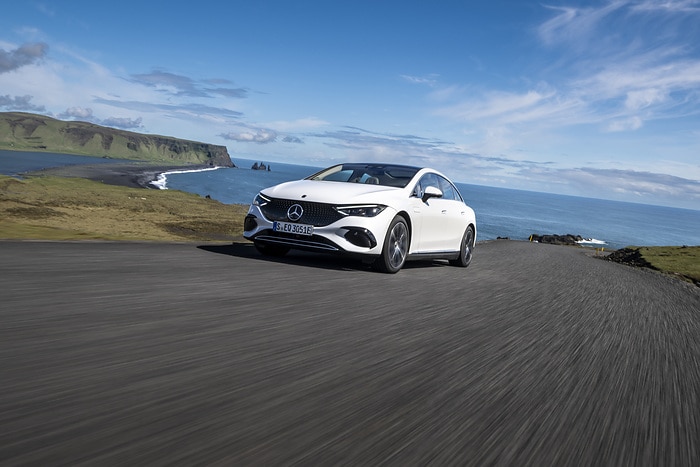- Mercedes has published product-related environmental information according to the ISO 14021 standard since 2005
- External experts verify this detailed “360° environmental check” for vehicles
- The EQE brochure has now successfully passed the validation audit
Important factors for the life cycle assessment of an electric car include the production of the high-voltage battery and the external charging processes during vehicle operation. Mercedes-Benz bases its model calculations on two different assumptions: the standard scenario takes into account the country‑specific power mix for charging the high-voltage battery and production of the battery cells. In the regenerative scenario, however, energy from renewable sources is used in each case.
Both scenarios are based on a mileage of 250,000 km for the EQE. If energy from renewable sources (hydroelectric power) is used for cell production in China and charging power in Europe, the CO₂ emissions over the lifecycle can be almost halved.
Interesting facts & figures: the sustainability of the EQE at a glance
The EQE achieves an excellent cd value as low as 0.22 thanks to its one-bow design and extensive aerodynamic measures.
184 components with a total weight of more than 78.3 kg can be made partly from resource-saving materials (recycled plastics and renewable raw materials).
The cell chemistry of the battery generation has also been optimised for sustainability: the active material consists of nickel, cobalt and manganese in a ratio of 8:1:1. The cobalt content is thus reduced to ten percent. Responsibly mined and processed raw materials provide the foundation for a sustainable Mercedes-Benz electric vehicle fleet.











